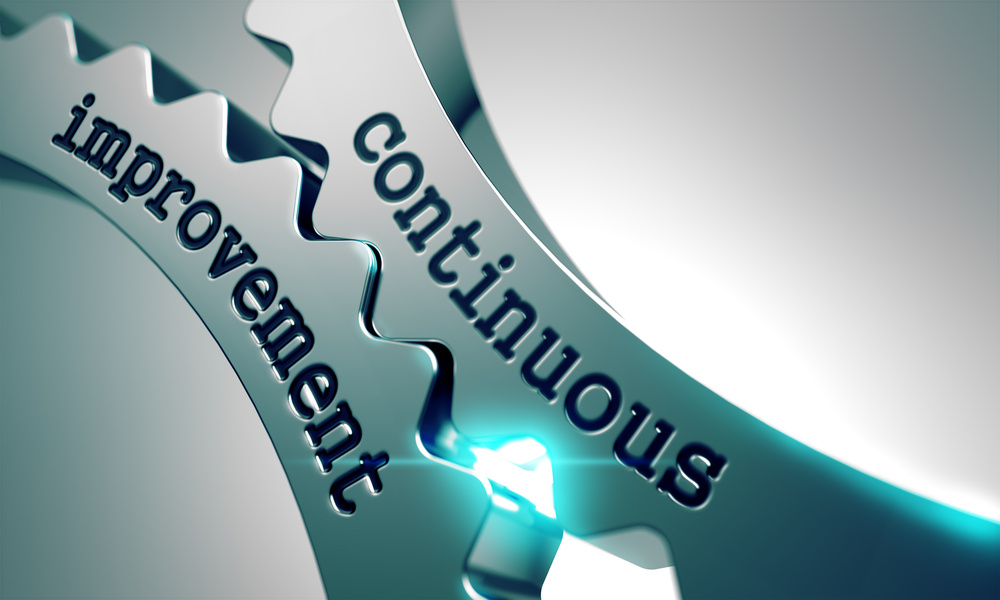In the fast-paced world of supply chain management, the ability to drive continuous improvement is crucial to staying competitive. Supply chains encompass the entire process of sourcing, production, and distribution of goods, making it essential to optimize every aspect of the supply chain to improve efficiency.
Introduction
Supply chains are complex networks involving suppliers, warehouses, logistics, and customers. In such an intricate system, any inefficiency can lead to delays, increased costs, and customer dissatisfaction. This highlights the importance of continuous improvement in business processes to streamline operations and meet customer expectations.
Overview of Supply Chains
A supply chain comprises various interconnected activities aimed at delivering a product or service to the end customer. It involves managing suppliers, warehouses, inventory, transportation, and distribution to ensure a smooth flow of goods. An efficient supply chain network is characterized by visibility, productivity, and the ability to meet customer demand in real-time.
Importance of Continuous Improvement
Continuous improvement is a systematic approach to enhancing business performance by implementing incremental changes and best practices. It involves identifying bottlenecks, measuring key performance indicators, and implementing improvement strategies to increase efficiency. By creating a culture of ongoing improvement, business managers can optimize processes, automate tasks, and improve visibility to meet dynamic customer expectations.
Implementing Continuous Improvement in Supply Chain Management
Driving improvement in supply chains is essential, especially during turbulent times. To better understand this concept, it's crucial to delve into the intricacies of business processes and the key steps needed to initiate and sustain ongoing improvement efforts.
Understanding the Concepts
Continuous improvement in supply chain management involves systematically enhancing processes to boost process efficiency and effectiveness. It requires a keen focus on logistics, suppliers, warehouses, warehouse locations, and inventory management to streamline operations and deliver optimal results. By optimizing these components, businesses can improve their overall performance and create a competitive edge in the market.
Key Steps to Implement Continuous Improvement
Implementing ongoing improvement in all business processes involves identifying bottlenecks, setting measurable metrics, and applying improvement strategies like lean principles or Six Sigma. By incorporating automation and real-time data analytics, organizations can enhance visibility, reduce lead times, and meet customer expectations efficiently throughout the supply chain.
Best Practices in Supply Chain Management
To get started with continuous improvement, it's crucial to establish a culture of ongoing process enhancement and embrace best practices. This includes optimizing warehouse management systems, refining business processes, and creating a culture that values innovation and efficiency. By committing to ongoing improvement, companies can adapt to changing market dynamics and ensure sustainable growth in the face of uncertainty.
Strategies for Improving Supply Chain Efficiency
Supply chain efficiency can be enhanced through various strategies that focus on streamlining operations and meeting customer demands. Process improvement techniques play a vital role in optimizing supply chain processes to eliminate bottlenecks and inefficiencies.
Process Improvement Techniques
Ongoing improvement techniques such as Kaizen and Six Sigma are valuable tools for enhancing supply chain performance. By continuously analyzing and improving processes, organizations can boost productivity, reduce costs, and increase customer satisfaction. These techniques involve identifying areas for improvement, implementing changes, and measuring the impact on key performance indicators.
Warehouse and Inventory Management
Efficient warehouse and inventory management are essential for a well-functioning business. By optimizing warehouse layout, implementing inventory control systems, and investing in automation, organizations can minimize stockouts, reduce holding costs, and improve order fulfillment. Effective inventory management ensures that products are available when needed, reducing lead times and enhancing overall supply chain efficiency.
Visibility and Tracking Solutions
Visibility and tracking solutions provide real-time insights into supply chain operations, enabling organizations to proactively address issues and optimize processes. By implementing advanced tracking technologies such as RFID and IoT sensors, companies can improve supply chain visibility, traceability, and responsiveness. Enhanced visibility allows for better decision-making, efficient problem-solving, and meeting dynamic customer expectations throughout the supply chain.
Prioritize What Will Have the Greatest Impact
When it comes to improving processes, it is important to prioritize activities on what improvements will have the biggest efficiency and productivity impacts that are important to your business. Some examples might be:
- Identify opportunities to improve customer outcomes such as delivering on-time and in full
- Look for bottlenecks in production and shipping
- Evaluate planning processes to optimize inventory
- Look at business processes that may create differences between physical inventory and system inventory
- Look at improvements holistically, not just one small area of a process
Cultural Aspects of Continuous Improvement
Creating a culture of continuous improvement is essential in supply chain management to foster innovation and drive efficiency. By encouraging employees to embrace change and seek ways to optimize processes, organizations can instill a mindset of continuous enhancement throughout the entire supply chain. Kaizen principles focus on making small, incremental improvements to achieve significant advancements in supply chain processes. By empowering employees to suggest and implement changes, organizations can continuously refine operations, reduce waste, and enhance overall productivity.
To effectively integrate these principles into our daily operations, we have established several key practices. Each new team member is introduced to our continuous improvement philosophy during their onboarding process, ensuring they understand their role in our culture of innovation from day one. We also hold weekly departmental whiteboarding meetings dedicated to discussing, planning, and tracking continuous improvement efforts. This consistent schedule not only keeps our teams focused on improvement but also facilitates open communication and collaboration across departments.
Moreover, we have embedded accountability for continuous improvement within every role in the organization. Every employee is encouraged and expected to contribute suggestions and actively participate in implementation processes. This empowerment leads to a diverse array of ideas and solutions, fostering a rich environment of creativity and problem-solving.
Adopting a customer-centric approach involves aligning supply chain activities with customer expectations and demands. By prioritizing customer satisfaction and responsiveness, organizations can tailor their processes to deliver products and services efficiently, ultimately enhancing customer loyalty and retention. Internally, the quantitative results of our efforts are tracked meticulously, allowing each team member to see the impact of their contributions. This visibility not only motivates our staff but also helps in setting benchmarks for future improvements.
Externally, our commitment to continuous improvement and cost-savings directly benefits our customers. They experience the value we add through streamlined processes and improved service delivery, which solidifies their trust and confidence in our capabilities. This holistic approach ensures that our commitment to continuous improvement permeates every aspect of our supply chain, driving sustainable growth and customer satisfaction.
Implementing Kaizen Principles
Kaizen principles focus on making small, incremental improvements to achieve significant advancements in supply chain processes. By empowering employees to suggest and implement changes, organizations can continuously refine operations, reduce waste, and enhance overall productivity. These continuous improvement efforts primarily involve straightforward, practical tweaks made by front-line employees within their specific departments. This localized approach allows for a more tailored and direct impact on processes, as opposed to broad organizational overhauls. Moreover, a successful continuous improvement initiative under Kaizen does not rely solely on sweeping strategic decisions from upper management but encourages participation from all levels of the organization. As these minor adjustments accumulate over time, they snowball into measurable, substantial results, demonstrating how small-scale changes can significantly transform business operations.
Building a Customer-Centric Approach
Adopting a customer-centric approach involves aligning supply chain activities with customer expectations and demands. By prioritizing customer satisfaction and responsiveness, organizations can tailor their processes to deliver products and services efficiently, ultimately enhancing customer loyalty and retention.
Automation and Technology in Supply Chain Management
Utilizing automation in supply chain management improves operational efficiency by automating repetitive tasks and streamlining processes. By implementing automated order processing systems and utilizing technologies like AI and robotics, organizations can enhance accuracy, speed, and reliability in their supply chain operations. However, when looking at automation, make sure to not automate a bad process.
Implementing Order Fulfillment Solutions
Efficient order fulfillment is crucial for meeting customer expectations and maintaining competitiveness. Implementing order fulfillment solutions, such as warehouse management systems and automated picking systems, can streamline order processing, reduce lead times, and enhance customer satisfaction.
Challenges and Opportunities in Technology Implementation
While technology offers numerous benefits in supply chain management, its implementation poses challenges such as integration issues and cost considerations. However, overcoming these challenges presents opportunities to improve supply chain visibility, optimize processes, and gain a competitive edge in the market through technological advancements.
Elevate Your Supply Chain with Visigistics
In today's constantly changing environment, staying ahead means constantly getting better. Your supply chain is the backbone of your business, and its efficiency directly impacts your bottom line and customer satisfaction. At Visigistics, we understand the complexities and challenges you face. Our cutting-edge solutions and expert consultancy are tailored to transform your supply chain into a seamless, cost-effective, and highly responsive operation.
Why Partner with Visigistics?
- Custom Solutions: Your business is unique, and so are your challenges. We offer bespoke solutions designed to meet your specific needs.
- Proven Expertise: With years of experience and a track record of success, our team is equipped to tackle any supply chain challenge.
- Innovative Technology: Stay ahead of the curve with our state-of-the-art technology that simplifies operations and drives efficiency.
- Sustainable Practices: Future-proof your supply chain with sustainable solutions that not only reduce your carbon footprint but also cut costs.
Take the Next Step
Don't let supply chain inefficiencies hold you back. Whether you're looking to optimize logistics, enhance inventory management, or implement sustainable practices, Visigistics is here to guide you through every step of the improvement process.
Ready to transform your supply chain?
Reach out to us today for a consultation. Together, we'll explore your current processes, identify areas for improvement, and devise a strategic plan tailored to your goals. Let's unlock the full potential of your supply chain.
Frequently Asked Questions:
Q: What is the importance of driving continuous improvement in supply chains?
A: Driving continuous improvement in supply chains is essential to stay competitive, increase efficiency, reduce costs, and enhance customer satisfaction.
Q: How can logistics play a role in improving the supply chain?
A: Logistics is a key aspect of supply chain management, and by optimizing logistics processes, companies can improve the overall efficiency and effectiveness of their supply chain.
Q: How can one implement a continuous improvement process in their supply chain operations?
A: To implement a continuous improvement process, companies can start by identifying areas of improvement, setting goals, gathering data, analyzing results, and making necessary adjustments to enhance their supply chain operations.
Q: What are some ways to create a culture of continuous improvement within a company?
A: Creating a culture of continuous improvement involves fostering a mindset of innovation, encouraging employee involvement, providing training and resources for improvement initiatives, and recognizing and rewarding improvements made in the supply chain.
Q: How can companies automate their supply chain processes to drive continuous improvement?
A: Companies can automate repetitive tasks, use technology such as artificial intelligence and machine learning for decision-making, implement real-time tracking and data analysis tools, and utilize advanced software systems to streamline and improve supply chain processes.
Q: What role does quality improvement play in driving continuous improvement in supply chains?
A: Quality improvement is crucial for ensuring consistent and reliable supply chain performance. By focusing on quality improvement initiatives, companies can enhance product and service quality, reduce defects, and optimize overall supply chain operations.
Q: How can companies identify opportunities for improvement within their supply chain?
A: Companies can conduct regular performance evaluations, gather feedback from customers and stakeholders, analyze data and metrics, benchmark against industry standards, and collaborate with supply chain partners to identify areas for improvement and innovation.
Q: How can success be celebrated within a team, and what recognition methods can be implemented?
A: Success within a team can be acknowledged and celebrated through various recognition techniques that not only boost morale but also encourage a culture of high performance. Firstly, teams that demonstrate exceptional performance can be celebrated through regular department-wide communications. Such communications might occur on a monthly, quarterly, and annual basis, praising teams for their achievements in terms of project management and execution.
Individuals who excel in conceptualizing and overseeing projects can be recognized in these updates and given the opportunity to showcase their work in front of senior leadership. This not only acknowledges their efforts but also provides them with valuable feedback.
Furthermore, competitive incentives can be introduced to foster a healthy spirit of achievement among team members. For example, the highest-performing team each month might be given the chance to present detailed analysis and results of their projects. Additionally, teams leading quarterly performance metrics could receive monetary bonuses as a token of appreciation.
Annually, the team demonstrating consistent overachievement might enjoy a group celebration, such as a dinner, offering a chance to bond and enjoy their collective success. Similarly, standout individuals might be rewarded with a significant annual bonus, underscoring the value of their individual contributions to the company's goals.
By implementing these varied recognition methods, an organization can effectively celebrate success and encourage a culture where both team collaboration and individual excellence are valued.
Q: How can we celebrate the success of new procedures and strategies in the continuous improvement process?
A: To effectively acknowledge achievements within the continuous improvement process, our approach includes multiple recognition methods that foster a culture of accomplishment and enthusiasm. We engage in regular communication, sending updates via department-wide emails that occur on a monthly, quarterly, and annual basis, to spotlight teams and individuals who demonstrate a noteworthy engagement in project management. Specifically, we applaud those achieving the highest project involvement per representative and those leading in the ideation and execution of projects. Additionally, motivational incentives such as the chance for monthly team leaders to exhibit their Project Analysis and Review Systems (PARS) to peers and senior management are implemented to encourage participation and excellence. We also reward quarterly team leaders with exclusive bonuses and honor the top-performing team of the year with a celebratory dinner. For outstanding individual contributors, we extend a significant annual bonus, underlining their critical role and success in our ongoing enhancement efforts.
Q: What are PARS (Problem/Action/Results Statements) and why are they recommended for cataloging processes?
A: PARS (Problem/Action/Results Statements) are a systematic way to record and analyze operational issues by detailing three key components: the specific problem encountered, the actions taken to address it, and the results of those actions. This method is highly recommended for cataloging processes as it provides a clear and structured overview of problem-solving efforts. By documenting the problem, action, and result sequence, PARS aids in pinpointing the fundamental challenges within a process, evaluating the effectiveness of the actions taken, and assessing the impact of those actions. This allows for a comprehensive understanding of process improvements and facilitates continuous improvement initiatives.
Q: What are the key phases of continuous improvement according to a real-life example?
A: In the exploration of continuous improvement processes through a practical example, a series of methodical phases can be distinctly outlined. These phases are crucial for systematically enhancing operational efficiencies and resolving issues within logistics and distribution networks. Here's how the phases unfold in a real-life context:
Phase 1: Assessing the Current State
Understanding the present condition of operations is fundamental. This includes identifying critical issues such as scheduling conflicts among carriers, coordination breakdowns across various teams (like the food distributor, shipment facilities, operations teams, and carriers), frequent missed pickup appointments, and accruing unnecessary costs from additional charges like Truck Orders Not Used (TONUs), layovers, and detention fees. By recognizing these issues, companies can set a baseline from which improvements can be planned.
Phase 2: Identification of Main Problems
After assessing the current operational landscape, the next step involves pinpointing the core problem or problems that hinder progress towards operational goals. In the discussed example, the primary issue identified was the systemic miscommunication that led to scheduling pickups at times when necessary personnel, such as USDA inspectors, were not available. This misalignment often resulted in drivers being unable to proceed with loading, thereby causing delays and added costs.
Phase 3: Establishing Target Goals
A critical phase in the continuous improvement process is setting clear, actionable goals. The objectives serve as benchmarks for what the improvement efforts aim to achieve. The goals in the case study included eliminating unnecessary accessorials, improving coordination and communication between all involved parties, ensuring schedules are aligned, enhancing overall operational efficiency, and boosting the rate of on-time pickups.
Phase 4: Mapping out the Strategy
Strategic planning involves collaboration and active participation from all team members, which fosters morale and commitment to the project. In the example, strategies were formulated using tools like the Fishbone/Ishikawa Diagram to aid team members in effectively contributing ideas, proposing solutions, and understanding the implications of these solutions. Regular team meetings further supported a dynamic environment for continuous feedback and brainstorming.
Phase 5: Measuring Effectiveness
The final step in the continuous improvement cycle is to evaluate the effectiveness of the implemented strategies relative to the established goals. Ongoing monitoring of logistics key performance indicators (KPIs) is essential to this phase. The effectiveness is measured by checking in regularly on the impact of changes through call coordination with stakeholders, direct discussions with involved parties like carriers and facility operators, and adjusting strategies, such as changing pickup times to better align with the availability of key personnel like USDA inspectors.
This systematic approach to continuous improvement helps in refining processes, reducing inefficiencies, and enhancing overall operational performance. Each phase builds upon the previous one, creating a loop of perpetual improvement tailored to meet specific organizational objectives.
Q: How can Visigistics assist in implementing a Continuous Improvement program in a supply chain?
A: Visigistics is equipped to assist by providing access to experienced supply chain consultants who can help you develop and implement a Continuous Improvement program. These specialists can guide you through the process of optimizing your supply chain operations to achieve sustained efficiency and effectiveness.
Q: How can companies lay the groundwork for implementing a continuous improvement program?
Companies can lay the groundwork for implementing a continuous improvement program by starting with identifying areas of improvement, setting goals, gathering data, analyzing results, and making necessary adjustments to enhance their supply chain operations. To effectively set this into motion, it is essential to first cultivate a culture that values curiosity and dedication, as these are the cornerstones of continuous improvement.
Begin by posing critical questions that target the heart of inefficiencies: What barriers are keeping us from optimizing our supply chain operations? How can we eliminate our waste and inefficiencies? This approach will help pinpoint organizational gaps that may be hindering productivity and success.
Following the identification of these gaps, develop a clear hypothesis that addresses potential fixes—for instance, hypothesizing that a lack of a consistent, structured approach to analyzing challenges and developing solutions is a major roadblock. With a hypothesis in place, conduct an objective investigation of current systems and processes to validate or refute your assumptions.
As these steps unfold, it is paramount to clearly articulate your goals. Establish a goal that aims to create a culture of continuous improvement capable of delivering a best-in-class product for both internal and external customers. Share this goal broadly within the organization to ensure alignment and foster an environment where every team member is engaged in the process.
Through this detailed and structured approach, companies can lay a solid foundation for continuous improvement, ensuring that efforts are not only initiated but sustained, leading to lasting organizational benefits.





